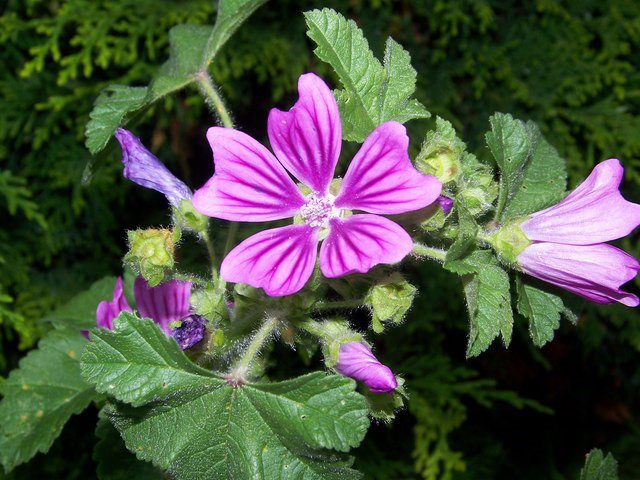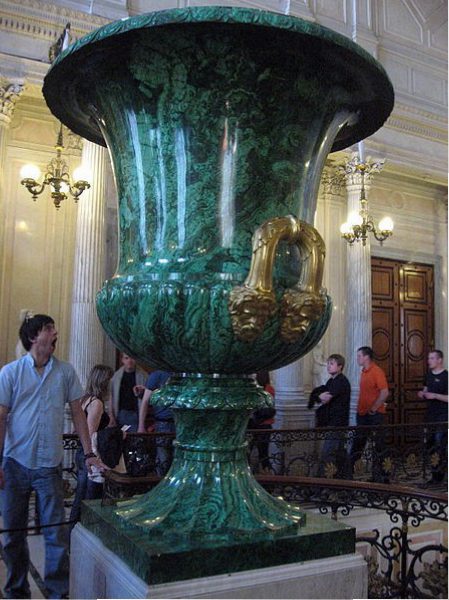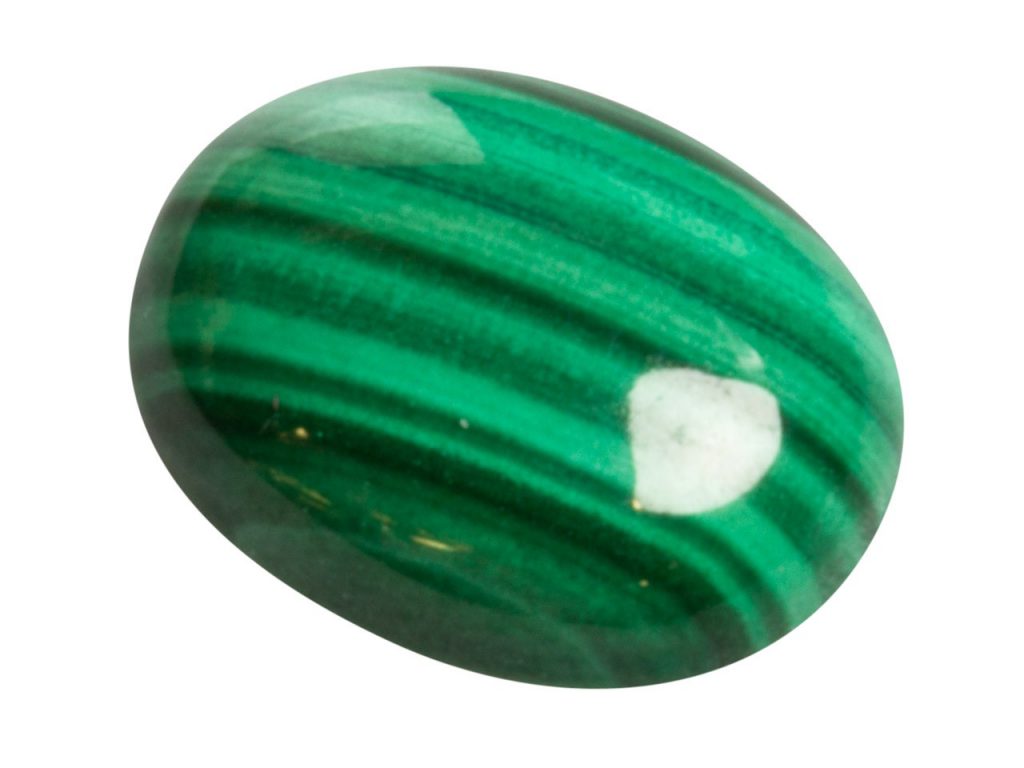Malachite is one of those distinctive stones which really cannot be mistaken for anything else. Its characteristic strong and dense green colour, coupled with its trademark light and dark banding, make it quite unique and unlike any other gemstone. Read on to discover the hardness of malachite, where it comes from, and which colours it’s available in.
Where does malachite come from?
The name ‘malachite’ is believed to be derived from the Greek words molochitis lithos, which essentially means ‘mallow green stone’. Mallow is a common wild flower which is prolific in a number of countries, including Eastern Europe, America and Asia and it is thought to be the green leaves of this plant which inspired the name.
Common Mallow (image source: Wikimedia)
How does malachite form?
Like many green stones, the malachite stone gets its intense colour from the presence of copper (copper hydroxycarbonate to be exact) in its composition. Malachite forms in large masses deep underground, and is often found in limestone where copper deposits have accumulated around the level of the water table, allowing chemical precipitation to take place. Over time, this particular process results in the formation of malachite, azurite and calcite, which all have similar properties.
The crystal structure of malachite is very small, making it unsuitable for faceting and is known as Monoclinic, meaning it has “a minimum symmetry of one two-fold axis” – Cally Hall, Gemstones Dorling Kindersley Handbook. When we talk about the crystal structure of gemstones it refers to the number of ‘axis of symmetry’, whereby a stone can be split in two using an imaginary line and remains identical on either side.
There are 7 different crystal systems used for classifying gemstones. The best symmetry is presented in the Cubic system, which is found in diamonds and has a minimum symmetry of four, three-fold axes.
The other defining crystal characteristic is the shape in which it forms. Most stones have a crystalline structure, which means it is arranged in a regular and symmetrical pattern made from a series of flat surfaces. The positioning of these faces creates the overall shape of the crystal itself, which is called the ‘habit’. Some stones will have a single habit e.g. pyramidal, whereas others may have several different ones. malachite has no defined habit and is therefore described as ‘massive’.
What is the hardness of malachite?
The lack of defined crystal structure, coupled with its relative softness in mineral terms (measuring only a 4 on Mohs Scale of Hardness), makes malachite the ideal material for carving, and this by happy coincidence is how it is best displayed. The distinctive light and dark green banding is at its finest when cut and polished into a smooth surface.
Smaller stones will be cut en cabochon, and larger pieces cut into slices or carved into ornaments or other decorative objects. Some of the most famous historical malachite objects are housed in The Hermitage Museum in St Petersburg, Russia which is home to one of the largest malachite vases in the world.
Giant Malachite Vase housed in the Hermitage Museum, Russia (image source: Wikimedia)
Just as lapis lazuli gemstones was used to make the infamous Ultramarine pigment years ago, malachite was also ground down to produce an intensely coloured powder used for painting and cosmetics. Pigments were produced using the stone up until the 1800s, when a synthetic version known as ‘verditer’ was developed.
Malachite, Oval Cabochon (product code 61ML OC18)
How valuable is malachite? And what colours are available?
The malachite gemstone is relatively inexpensive to buy, and you will find decent sized cabochons and beads available to purchase for just a few pounds. Every stone is unique, so you never quite know what you are going to get particularly if buying online, but it’s a great way to inject a splash of vibrant colour and interest to your work. Added to that is the fact that green is a popular choice for those creating malachite jewellery, so give it a go.
Are you thinking of adding this vibrant green gemstone to one of your jewellery designs soon? Get started by exploring Cooksongold’s full range of malachite gemstones here.

jaskcreative



